I just finished a two-week trip to India, eight days of which were spent meditating under the Bodhi Tree at the centre of Mahabodhi Temple, which marks the spot where Siddhartha Gautama attained full enlightenment about 2500 years ago. The site has been a locus of Buddhist practice for over 2000 years, and the power of the place hits you like the blast from an open oven the minute you enter.
The temple is designed like a mandala with a 55m-high pyramidic temple in the centre with three circles surrounding it where thousands of pilgrims and practitioners circumambulate chanting mantras, offering flowers, and prostrating. The air is heavy with incense and the sound of bodhisattva mantras from hundreds of Tibetan monks.
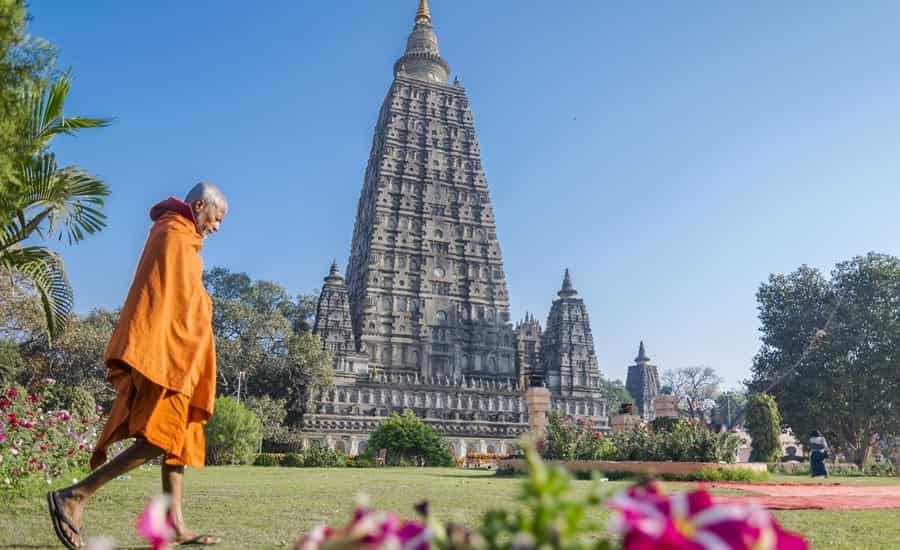
It’s a whirlpool of psychic energy: the final swirl of water that disappears down the plughole of dhamma. The gnarled Bodhi Tree spreads its thick branches around one side of the temple.
While clearly not the original tree, there’s some evidence showing that this tree is the direct descendant of a tree that was planted to mark the holy site roughly 250 BCE. “This tree was originally a sapling of the Sri Maha Bodhi tree in Sri Lanka,” according to Wikipedia. “Itself grown from what is claimed to be a sapling of the original Bodhi tree.”
I followed the flow of devotion and found a seat under the canopy, sitting among a group of meditators as the pilgrims orbited behind me. There, I wept as a door inside opened and through it was only radiance, radiance, radiance.
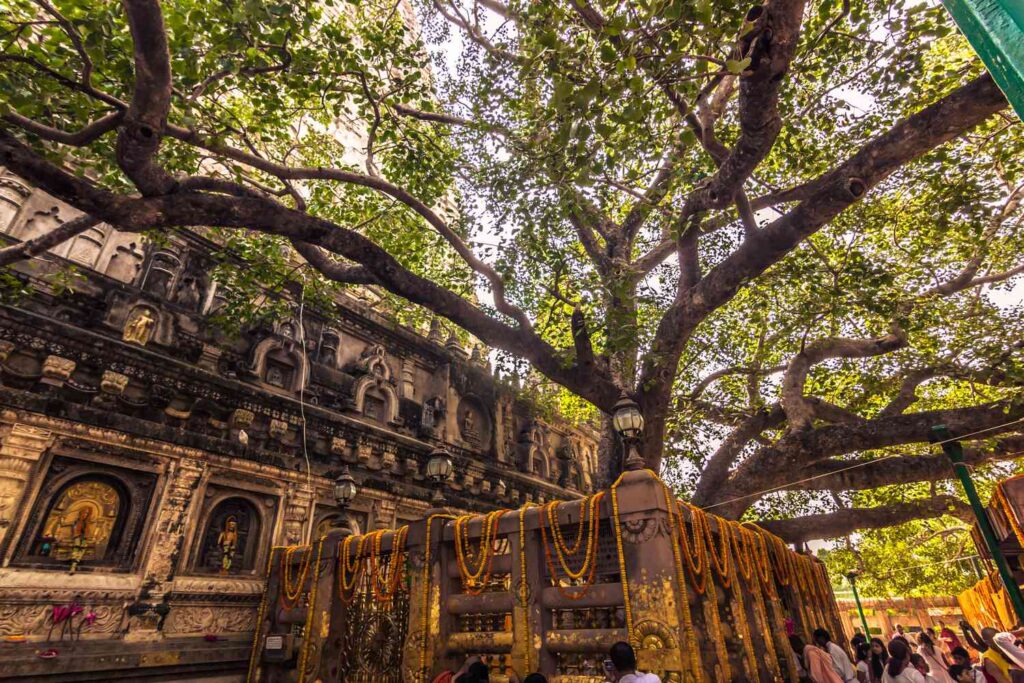
So it was off to a good start. I met one of my main teachers, a senior monk. His group let me tag along, arranged a room for me at their guesthouse, and provided a supportive setting. I also offered him some gifts. Without getting into a huge spiel, gift-giving is a massively important part of Buddhism and monks are the focal point for the receiving and – more often than not – redistribution of gifts.
I chose a meditation schedule that was well within my abilities: seven hours daily. But created enough of a challenge by dividing those hours up into three two-hour sessions and one final hour, all under the Bodhi Tree.
If I was staying longer I would have worked up my sitting hours to at least eight and maybe more but I didn’t feel like being a hero and smashing myself with extreme sitting from the get go. The schedule turned out to be just taxing enough without causing exhaustion and dread.
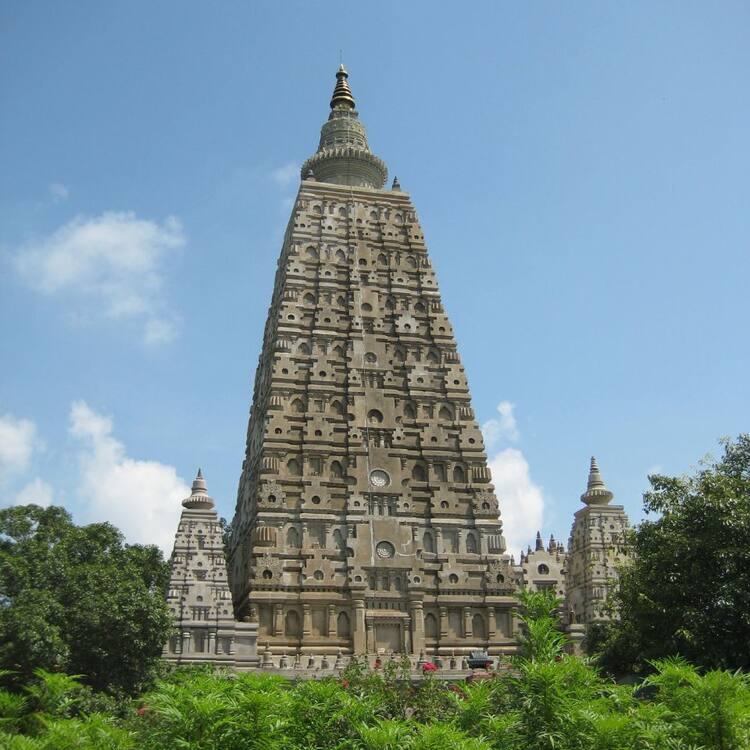
Having meditated for 14 years and after spending a total of two years on intensive retreat, I have a toolbox of meditation techniques, which help navigate some of the challenges that arise. Standard difficulties include (in order of regularity/annoyance): body aches and pains, sleepiness, background noise, trying too hard, trying not to try too hard, obsessive thoughts, troubling thoughts, mosquitos… the list goes on.
My homebase meditation is mindfulness of breathing. Plain old breath meditation. It worked well for the first few days but as deeper levels of my mind opened to reveal the accumulated weird funk that lurks there, it got frustrating. I just couldn’t focus on my breath for more than a few breaths and then the mind would go again.
This is actually a good sign. It means the mind is purifying itself. So if you find yourself on a meditation retreat and your technique is getting worse that’s actually good.
But the frustration wasn’t helping so I gave up the breath as an object and let it fall into the background and “zoomed out” as Shinzen Young likes to say and just gave the meditation process as much space as it needed to let all the layers of clinging, suffering, the he-said-she-said, the bullshit, space to come up, be seen, and let go.
Because that’s all that your inner turmoil really needs – to be seen and let go. Specifically, the process is to see with equanimity and kindness all that arises and understand that it is impermanent, unsatisfactory, and non-self.
If it has these three characteristics, then how can you cling to it any more? And when you let go, the mind becomes peaceful and happy, as if you have let go of a hot, heavy rock you didn’t know you were carrying.
I also practiced the Brahmaviharas, also known as the four divine abidings, which are metta (loving-kindness), karuna (compassion), mudita (joy), and upekkha (equanimity). These four beautiful states of the heart can be cultivated and radiated outwards to include all beings, even ones you dislike.
Loving-kindness and compassion are the two most popular strands so it was a pleasant surprise to find that it was easier to practice mudita and equanimity sitting on the cool marble under the grand tree. Easier because my entire soundscape was filled with practice, with devotional signing, delicate pujas, and joyful chatter. And the temple pyramid seemed to sweat sweet-smelling flowers left by monks in saffron and orange.
The amount of merit (kamma in Buddhist Pali, and karma in Sanskrit) being generated made mudita spring up from my heart and I cultivated it by wishing everyone there to have ever more good fortune, make even more good kamma, and to enjoy the best fruits of their lives and practice.
Like mudita, equanimity is often left out when the brahmaviharas are taught because it’s hard to grok and too easy to mistakenly fall into indifference. Equanimity, then, is probably the most subtle of the four, but it underpins and holds the others.
To practice equanimity as a heart state I just gently said “yes” to every experience that arose. Welcoming each one, as if saying “yes, you too.” It might not have been pure equanimity but it was close enough for a practitioner of limited means like myself.
Either way, it was an unexpected gift to find these two oft-forgotten heart-states arising so simply and I was grateful that over the years I had found practices from teachers such as Gil Fronsdale and Stephen Synder to recognize and work with them.
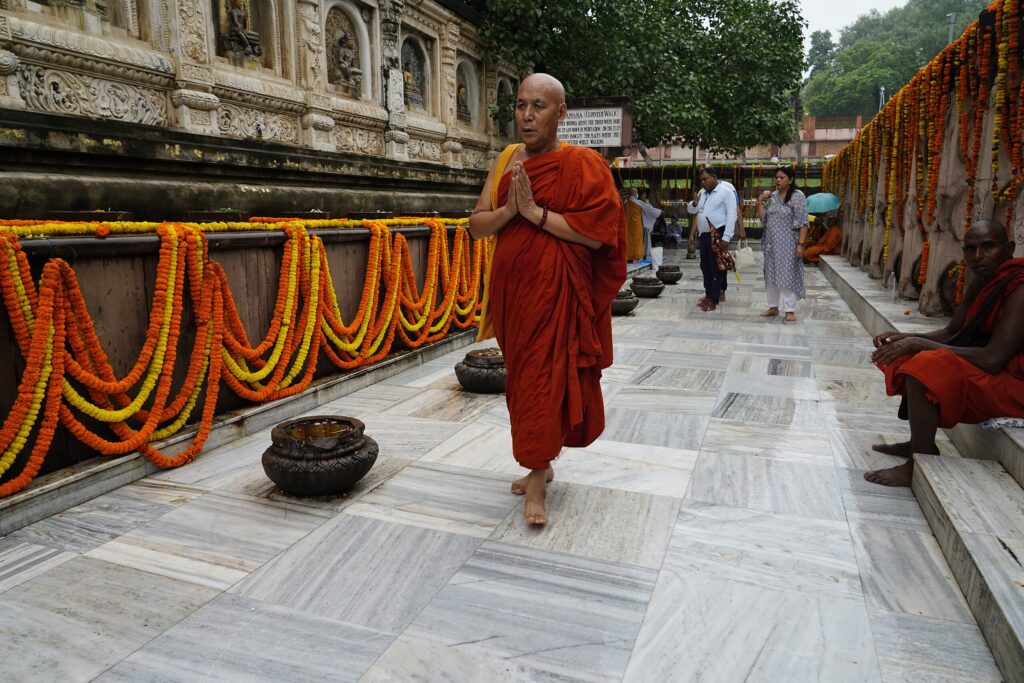
I chose a schedule that started at 3:30am so I could spend 45 minutes doing some asana practice in my room before meeting a couple of people from my group to leave at 5am. Our teacher’s usual attendant fell sick so it became my job to get to the Bodhi Tree right after opening time at 5am to reserve him a meditation spot under the tree.
Competition for prime sitting spots can lead to some tension but these rarely boil over into anything more than the odd grunt or less-than-noble thought. I must admit I scolded a few people who tried to cut in line in the morning’s dark outside the temple gate. The line was long and obvious and I didn’t see any excuse for this kind of thing.
After my first two-hour sit, I ate breakfast at Om Tibet Cafe, which my teacher recommended as safe and clean. I was paranoid of sickness due to the unsanitary conditions in India and stuck very carefully to the rules of eating nothing that wasn’t boiled, peeled, or clearly cooked extremely well.
My digestion is also not a fan of very oily food or heavily spiced food so as much as I like the taste of Indian food, it’s usually followed by crippling indigestion or worse so I was pleased to find there was a good selection of bland and nutritious food at Om Tibet. If I was staying in India longer I might have been more adventurous but I had very limited time to meditate and I couldn’t afford a stomach bug.
I had porridge and tea for breakfast and a selection of momos, boiled broccoli, tofu burgers, and noodle soup for lunch. No food after noon as per the “eight precept” training rules I had taken on for the duration of the retreat (apart from some dark chocolate, which is allowed on some blessed technicality).
Usually, Buddhist lay people have five precepts: no killing, stealing, lying, sexual misconduct and taking intoxicants. When on retreat or staying at a temple lay Buddhists add an extra three rules: no sleeping on comfy beds, entertainment, and eating after noon and we wear white clothes to signify we are following eight precepts.
Where I grew up “wearing your whites” meant you were going to play cricket but I’m much happier putting on my whites to stay at a temple or take an intensive retreat. The clothing reminds you of your commitment and I dread to think of the scolding I would get if I tried to order food from a Thai vendor as a “khun khao” (eight-precepter) after noon.
I also wore my favorite mala beads, which I got at Boudhanath Stupa in Kathmandu, which is the only place that could rival the Mahabodhi temple in terms of uncut inspiration and intense merit. And also my special amulet, which contains some blessed string and the hair of an enlightened master.
The amulet lives on my altar at home and I only wear it when I’m on retreat to keep the energy around it pure and allow the blessing to stay fresh, as it were. I guess it’s like keeping lovely food in the fridge. I also pressed the amulet against the wall surrounding the tree and at various buddha and bodhisattva images carved into the temple wall three times to further charge the amulet with blessings and positive energy.
I didn’t start my Buddhist journey charging amulets and collecting the hair of monks. As a western-educated millennial, the more rational and secular presentation of Buddhism by Goenka and teachers within the modern mindfulness movement has been and is still very helpful.
However, having lived in Southeast Asia for 13 years, I have taken up more traditional practices and beliefs. Indeed, a few years ago I made a conscious decision to believe in hidden realms, deities and ghosts, magick (spelled with a “k” to differentiate from stage magic as per Crowley), and the like because, if our experience of reality is a construct, then why not make it fun?
Living in a world where there are land spirits and spellcasting, well, what’s not to like? When I started getting a bit more serious about my magickal practice I felt a little guilty because I thought it might distract from efforts to escape Samsara. I mean, why arrange deckchairs on the Titanic?
But my teacher said that it’s OK to use some skillful means to create positive circumstances for yourself but that I ought to ensure that I make a lot of merit this lifetime lest I draw down on my balance of accumulated good kamma via magickal means. This explaination makes sense to me and it’s been a helpful reflection that has helped me to avoid falling into complacency when good fortune has come and to always practice generosity.
More practically, the belief in magick, spirits, and energies arose alongside my faith in the Buddha as a world or even universe teacher. It seems to be part of how the faith faculty (one the five spiritual faculties in Buddhism: faith, energy, mindfulness, concentration, and wisdom.) works. This growth in faith in the Buddha, unseen realms, kamma and the like is an immense help when I encounter doubt on my path. Unchecked doubt can really derail your practice.
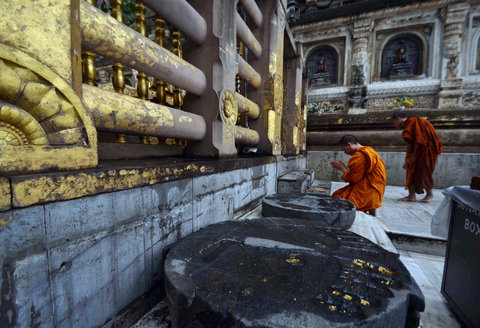
Speaking of skillful means, I should mention my yoga asana practice during the retreat. Anyone who has more than a nodding acquaintance with my “work” (a grandiose term for occasionally posting a podcast or doing handstands on Instagram) will know that Ashtanga Vinyasa Yoga (Ashtanga) has been as much a part of my path as Buddhism.
As this was a Buddhist retreat my Ashtanga practice naturally took a back seat but asana is still very important to keep the body healthy, vital, and primed to deal with the rigours of long hours sitting outside in a hostile bacterial environment. That’s why I was rising at 3:30am because that was the only time I could do some asanas. I experimented with fitting in as much juice as possible in the short 40-minute sessions and found a joyful focus on inversions and backbends doing them on alternate days.
Inversions can be very meditative and the old yoga texts note that they are a great aid in developing pratyahara (drawing the senses inwards). I also discovered that I could cover most of the core movements in Ashtanga’s primary series while in a headstand (I will post a video of this on instagram ASAP). On other days I did the Ashtanga standing sequence followed by a selection of my hardest backbends, which sent lucky dragon energy rushing up and down my spine.
As for meditation itself, it was a rollercoaster. Retreats, whether two days or two months, tend to follow the same pattern: an initial enthusiasm making the first part blissful and easy, followed by a dark period when all the rejected and unprocessed detritus in your consciousness comes up, and the final part which is a mix of fatigue, restlessness, and profound bliss.
The main difference sitting under the Bodhi Tree was the potency of the location. It reminded me of a line from one of my favorite hip hop groups, Dark Circle, who said that, in London, south of the river, “the green’s greener and the stout is more bitter.” Similarly, under the Bodhi Tree, the bliss is more blissful and the purification more bitter – it doesn’t quite rhyme but, well, you get the point.
And if you don’t get the point, it is this: the Bodhi Tree is very powerful. It’s been a locus of constant merit and Buddhist practice for thousands of years and it magnified my meditation giving a bang for my buck that beat any other location. Sure, it’s noisy and the distractions may allay the very peaceful states that come up on a quiet mountaintop but it just diverted my practice towards gaining insight into the core aspects of reality, namely, that all things are impermanent, arising and ceasing in awareness.
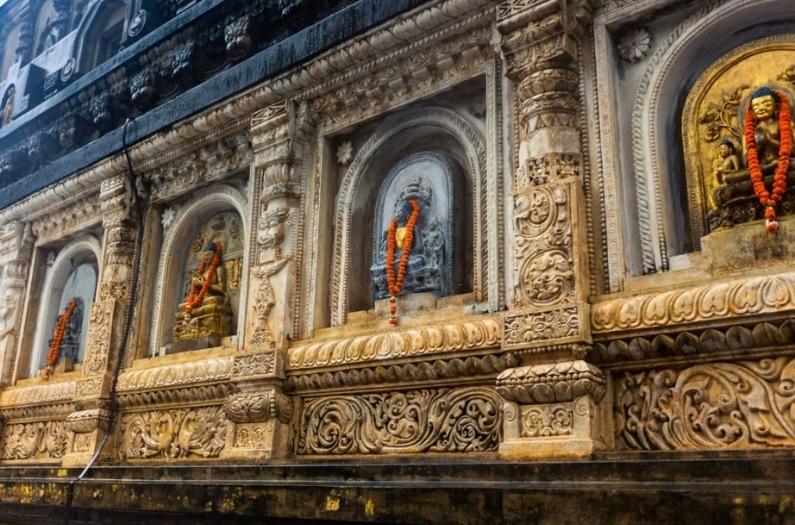
In my last few days, I saw a little more of Bodhgaya and I really liked how unlike Bali it is. Don’t get me wrong, I like Bali but the spiritual practice there, to me, seems quite self-indulgent.
Bodhgaya, on the other hand, doesn’t have any wellness centres, spas, or ungrounded “life coaches” desperate to help you unleash your inner god or goddess. The few cafes attempting to cater to western tastes serving pizza and lattes fall charmingly short of Starbucks standards, and the only inner unleashing being done by tourists is the result of badly cooked pakoras.
I liked the fact that 99% of the visitors were serious practitioners, monks, nuns, and devout lay people. They weren’t there for selfies and Instagram followers or to sell their new online yoga school, they were there to practice and in honor of the Buddha and what he achieved.
On my last day, I gave flowers to my teacher and his monks and asked for forgiveness in case of any bad kamma I made during the trip. I left their room with the sound of their blessing chant ringing in my heart and got one more masala chai before packing up and leaving.
Now I’m back home, the time spent there seems like a precious dream and only time will tell how much of an impact it had. Maybe it will have an impact over several lifetimes, or maybe I have psychologically overblown it.
Perhaps the best way to think about it is like tectonic plates. When on intensive retreat, these very deep plates move and shift and when the results make their way to the surface they are rarely predictable but always wholesome.
We’ll see what ripples may come.
